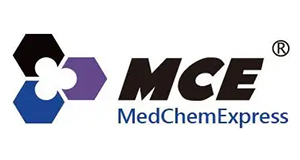High Diversity Fragment Library
High Diversity Fragment Library
SKU
MEXHY-L187-50
Packaging Unit
50 µl
Manufacturer
MedChemExpress
Availability:
loading...
Price is loading...
Description: Fragment-based drug development (FBDD) is a strategy for drug discovery that can be applied both academically and commercially to enhance the identification of some non-drug targets. Fragment-based drug development has identified low molecular weight molecules (<300 Da) capable of binding to related macromolecules. These fragments can cover a wide chemical space and are easy to optimize later. Currently, several fragment-based drugs have entered clinical trials, of which two drugs, Vemurafenib and Venetoclax, have been approved for marketing.
Fragment-based drug development (FBDD) is a strategy for drug discovery that can be applied both academically and commercially to enhance the identification of some non-drug targets. Fragment-based drug development has identified low molecular weight molecules (<300 Da) capable of binding to related macromolecules. These fragments can cover a wide chemical space and are easy to optimize later. Currently, several fragment-based drugs have entered clinical trials, of which two drugs, Vemurafenib and Venetoclax, have been approved for marketing.
Based on Tanimoto coefficient, MCE uses similarity algorithm to carefully select 2,335 high-structurally diverse 'RO3' compliant fragment molecules from large-scale fragment molecules, which can be applied to fragment based drug development.
Fragment-based drug development (FBDD) is a strategy for drug discovery that can be applied both academically and commercially to enhance the identification of some non-drug targets. Fragment-based drug development has identified low molecular weight molecules (<300 Da) capable of binding to related macromolecules. These fragments can cover a wide chemical space and are easy to optimize later. Currently, several fragment-based drugs have entered clinical trials, of which two drugs, Vemurafenib and Venetoclax, have been approved for marketing.
Based on Tanimoto coefficient, MCE uses similarity algorithm to carefully select 2,335 high-structurally diverse 'RO3' compliant fragment molecules from large-scale fragment molecules, which can be applied to fragment based drug development.
Advantages:
Formulation: A collection of 2,335 fragments as pre-dissolved solutions or solid.Solution:2,335 compounds supplied in 10 mM solution.
Layout: 96-well storage tube or 96-well plate: 1st and 12th column are left empty.384-well plate: the first two columns and the last two columns are left empty.Compounds with different concentrations or dissolved in different solvents will be put on separate plates.This way of layout may increase the number of plates because there could be three solvents and three concentrations. If you have other requirements, please let us know.
Container: 96- or 384-well Plate with Peelable Foil Seal; 96-well Format Sample Storage Tube With Screw Cap and Optional 2D Barcode
Fragment-based drug development (FBDD) is a strategy for drug discovery that can be applied both academically and commercially to enhance the identification of some non-drug targets. Fragment-based drug development has identified low molecular weight molecules (<300 Da) capable of binding to related macromolecules. These fragments can cover a wide chemical space and are easy to optimize later. Currently, several fragment-based drugs have entered clinical trials, of which two drugs, Vemurafenib and Venetoclax, have been approved for marketing.
Based on Tanimoto coefficient, MCE uses similarity algorithm to carefully select 2,335 high-structurally diverse 'RO3' compliant fragment molecules from large-scale fragment molecules, which can be applied to fragment based drug development.
Fragment-based drug development (FBDD) is a strategy for drug discovery that can be applied both academically and commercially to enhance the identification of some non-drug targets. Fragment-based drug development has identified low molecular weight molecules (<300 Da) capable of binding to related macromolecules. These fragments can cover a wide chemical space and are easy to optimize later. Currently, several fragment-based drugs have entered clinical trials, of which two drugs, Vemurafenib and Venetoclax, have been approved for marketing.
Based on Tanimoto coefficient, MCE uses similarity algorithm to carefully select 2,335 high-structurally diverse 'RO3' compliant fragment molecules from large-scale fragment molecules, which can be applied to fragment based drug development.
Advantages:
- A unique collection of 2,335 high diversity fragments for high throughput screening (HTS) and high content screening (HCS).
- Bioactivity and safety confirmed by preclinical research and clinical trials. Some compounds have been approved by FDA.
- Structurally diverse, bioactive, and cell permeable.
- More detailed compound information with structure, IC50, and other chemical & biological data.
- High purity and quality validated by NMR and LC/MS.
- All compounds are in stock and continuously updated.
Formulation: A collection of 2,335 fragments as pre-dissolved solutions or solid.Solution:2,335 compounds supplied in 10 mM solution.
Layout: 96-well storage tube or 96-well plate: 1st and 12th column are left empty.384-well plate: the first two columns and the last two columns are left empty.Compounds with different concentrations or dissolved in different solvents will be put on separate plates.This way of layout may increase the number of plates because there could be three solvents and three concentrations. If you have other requirements, please let us know.
Container: 96- or 384-well Plate with Peelable Foil Seal; 96-well Format Sample Storage Tube With Screw Cap and Optional 2D Barcode
| SKU | MEXHY-L187-50 |
|---|---|
| Manufacturer | MedChemExpress |
| Manufacturer SKU | HY-L187-50 |
| Package Unit | 50 µl |
| Quantity Unit | STK |
| Product information (PDF) |
|
| MSDS (PDF) |
|

 Deutsch
Deutsch




